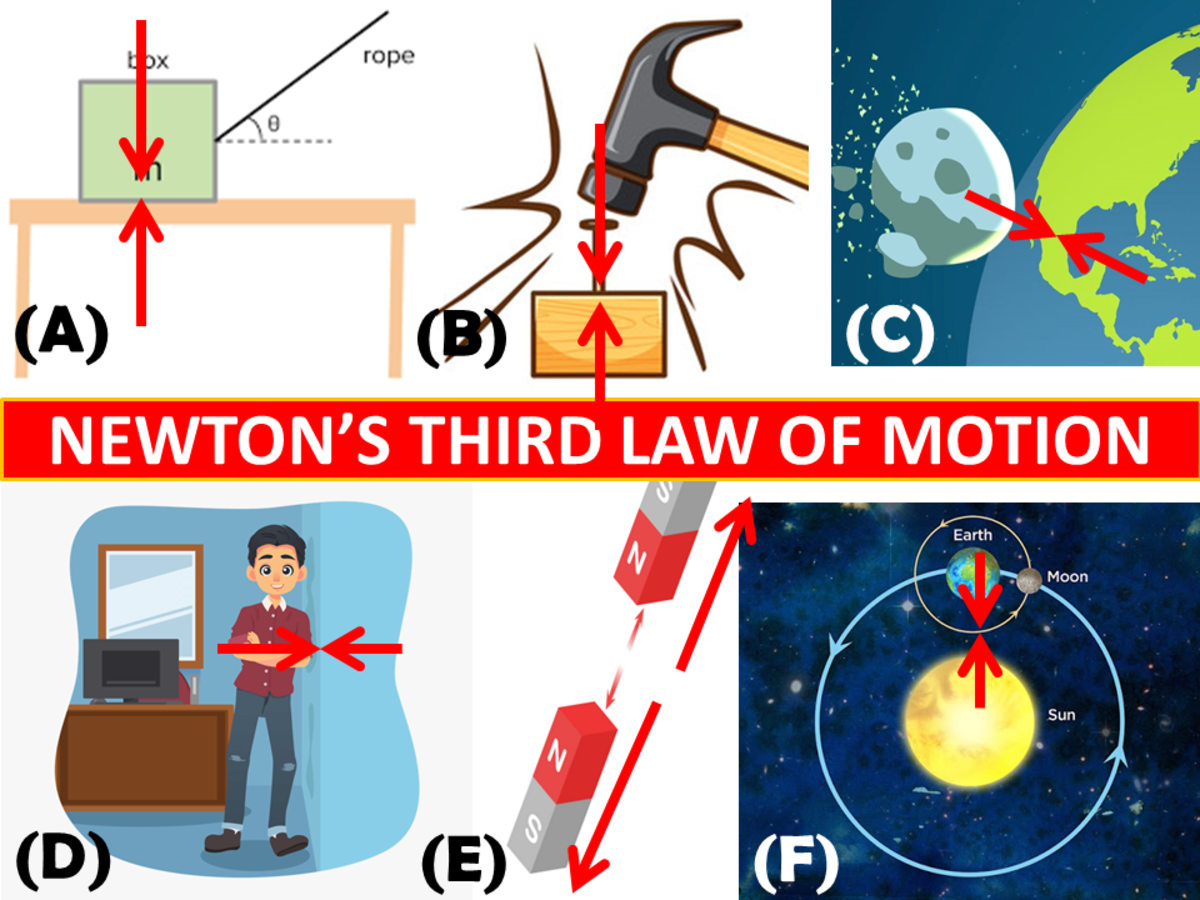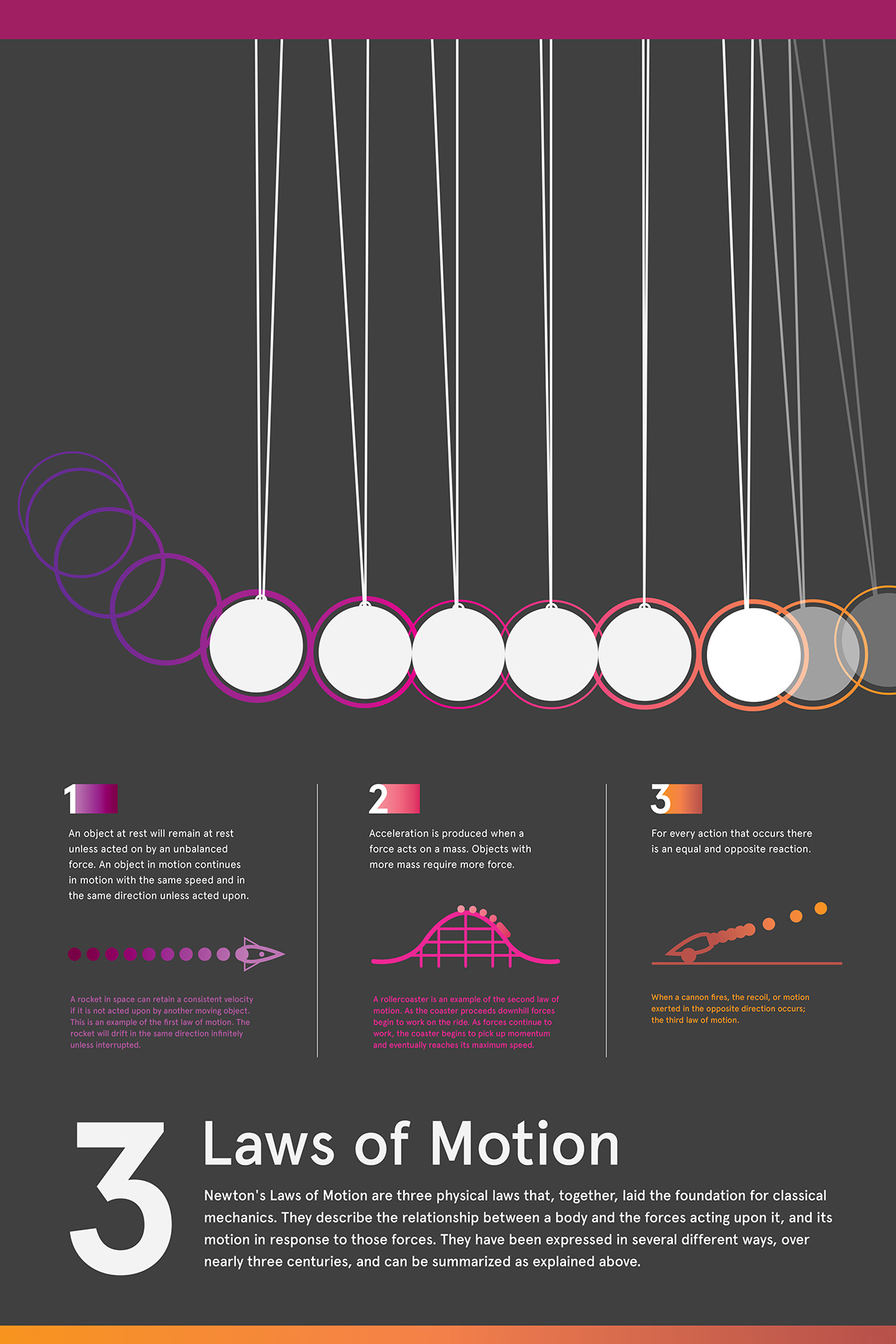Newton S 3Rd Law
Newton S 3Rd Law - This means that when an object exerts a force on. 1st law is galileo's and; Certainly newton's law of gravitation is proved by taking a limiting case of einstein's field equations. Newton's 3rd law of motion, also known as the law of action and reaction, states that for every action, there is an equal and opposite reaction. If there is action then there will be opposite & equal reaction. What you are missing is that the action and reaction forces apply to two different objects. 2nd is leibniz/coriolis' gravity's inverse square law is hooke's (universally acknowledged, even newton's agiographers, p.152. 3rd law is huygens', considering that; Newton third law states that: Newton used the third law to derive the law of conservation of momentum;[33] from a deeper perspective, however, conservation of momentum is the more fundamental idea (derived.
3rd law is huygens', considering that; Newton used the third law to derive the law of conservation of momentum;[33] from a deeper perspective, however, conservation of momentum is the more fundamental idea (derived. 1st law is galileo's and; Newton third law states that: 2nd is leibniz/coriolis' gravity's inverse square law is hooke's (universally acknowledged, even newton's agiographers, p.152. What you are missing is that the action and reaction forces apply to two different objects. Newton's 3rd law of motion, also known as the law of action and reaction, states that for every action, there is an equal and opposite reaction. If there is action then there will be opposite & equal reaction. Certainly newton's law of gravitation is proved by taking a limiting case of einstein's field equations. Planck's radiation law is a derived law, taking several more fundamental postulates as.
Certainly newton's law of gravitation is proved by taking a limiting case of einstein's field equations. Newton used the third law to derive the law of conservation of momentum;[33] from a deeper perspective, however, conservation of momentum is the more fundamental idea (derived. 3rd law is huygens', considering that; 2nd is leibniz/coriolis' gravity's inverse square law is hooke's (universally acknowledged, even newton's agiographers, p.152. What you are missing is that the action and reaction forces apply to two different objects. Newton's 3rd law of motion, also known as the law of action and reaction, states that for every action, there is an equal and opposite reaction. Newton third law states that: Planck's radiation law is a derived law, taking several more fundamental postulates as. This means that when an object exerts a force on. If there is action then there will be opposite & equal reaction.
Summary of Newton’s Three Laws of Motion
Certainly newton's law of gravitation is proved by taking a limiting case of einstein's field equations. Planck's radiation law is a derived law, taking several more fundamental postulates as. 1st law is galileo's and; What you are missing is that the action and reaction forces apply to two different objects. This means that when an object exerts a force on.
PPT 5 Newton’s Third Law of Motion PowerPoint Presentation, free
Newton's 3rd law of motion, also known as the law of action and reaction, states that for every action, there is an equal and opposite reaction. Newton third law states that: If there is action then there will be opposite & equal reaction. What you are missing is that the action and reaction forces apply to two different objects. Certainly.
Newton S Laws Of Motion Diagram Concept Map Newtons Laws Of Motion
Newton third law states that: 3rd law is huygens', considering that; This means that when an object exerts a force on. Certainly newton's law of gravitation is proved by taking a limiting case of einstein's field equations. Planck's radiation law is a derived law, taking several more fundamental postulates as.
Newton’s Third Law Of Motion Pushing Things Forward Rapids Riders Sports
1st law is galileo's and; Newton used the third law to derive the law of conservation of momentum;[33] from a deeper perspective, however, conservation of momentum is the more fundamental idea (derived. This means that when an object exerts a force on. What you are missing is that the action and reaction forces apply to two different objects. 3rd law.
Newton's 3rd Law of Motion YouTube
Planck's radiation law is a derived law, taking several more fundamental postulates as. This means that when an object exerts a force on. 3rd law is huygens', considering that; Newton's 3rd law of motion, also known as the law of action and reaction, states that for every action, there is an equal and opposite reaction. Certainly newton's law of gravitation.
Newton’s third law of motion Presentation Physics
2nd is leibniz/coriolis' gravity's inverse square law is hooke's (universally acknowledged, even newton's agiographers, p.152. This means that when an object exerts a force on. Planck's radiation law is a derived law, taking several more fundamental postulates as. Newton third law states that: Newton used the third law to derive the law of conservation of momentum;[33] from a deeper perspective,.
Newton's Third Law poster by D F Issuu
Newton's 3rd law of motion, also known as the law of action and reaction, states that for every action, there is an equal and opposite reaction. 3rd law is huygens', considering that; 2nd is leibniz/coriolis' gravity's inverse square law is hooke's (universally acknowledged, even newton's agiographers, p.152. Planck's radiation law is a derived law, taking several more fundamental postulates as..
Newton’s Third Law of Motion
Newton's 3rd law of motion, also known as the law of action and reaction, states that for every action, there is an equal and opposite reaction. What you are missing is that the action and reaction forces apply to two different objects. Certainly newton's law of gravitation is proved by taking a limiting case of einstein's field equations. 3rd law.
The Physics of Fast Execution Organizational Physics by Lex Sisney
Certainly newton's law of gravitation is proved by taking a limiting case of einstein's field equations. 2nd is leibniz/coriolis' gravity's inverse square law is hooke's (universally acknowledged, even newton's agiographers, p.152. 3rd law is huygens', considering that; Planck's radiation law is a derived law, taking several more fundamental postulates as. What you are missing is that the action and reaction.
Newton's Three Laws of Motion Infographic Newton's cradle, Newtons
Certainly newton's law of gravitation is proved by taking a limiting case of einstein's field equations. Newton used the third law to derive the law of conservation of momentum;[33] from a deeper perspective, however, conservation of momentum is the more fundamental idea (derived. 2nd is leibniz/coriolis' gravity's inverse square law is hooke's (universally acknowledged, even newton's agiographers, p.152. Newton third.
Newton Used The Third Law To Derive The Law Of Conservation Of Momentum;[33] From A Deeper Perspective, However, Conservation Of Momentum Is The More Fundamental Idea (Derived.
Certainly newton's law of gravitation is proved by taking a limiting case of einstein's field equations. Planck's radiation law is a derived law, taking several more fundamental postulates as. Newton third law states that: If there is action then there will be opposite & equal reaction.
2Nd Is Leibniz/Coriolis' Gravity's Inverse Square Law Is Hooke's (Universally Acknowledged, Even Newton's Agiographers, P.152.
1st law is galileo's and; 3rd law is huygens', considering that; What you are missing is that the action and reaction forces apply to two different objects. Newton's 3rd law of motion, also known as the law of action and reaction, states that for every action, there is an equal and opposite reaction.
.PNG)




.PNG)

.PNG)

